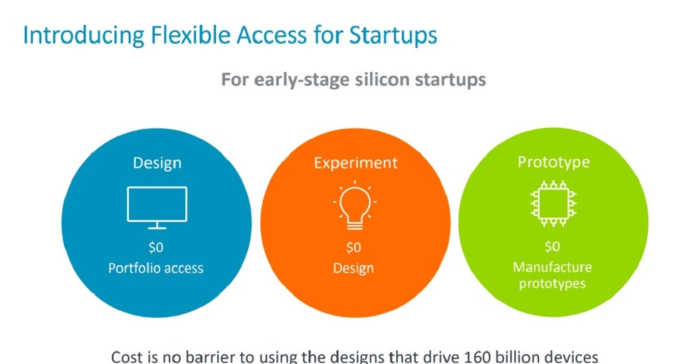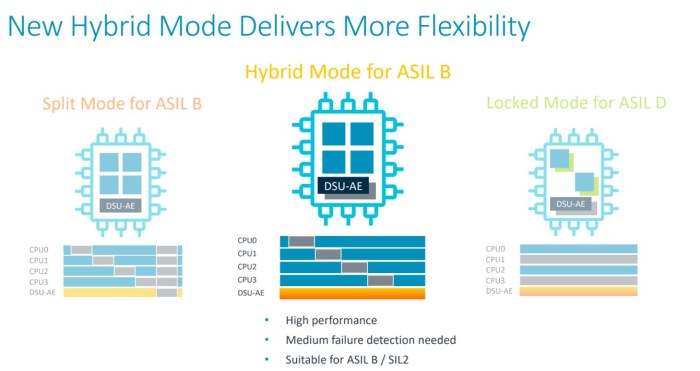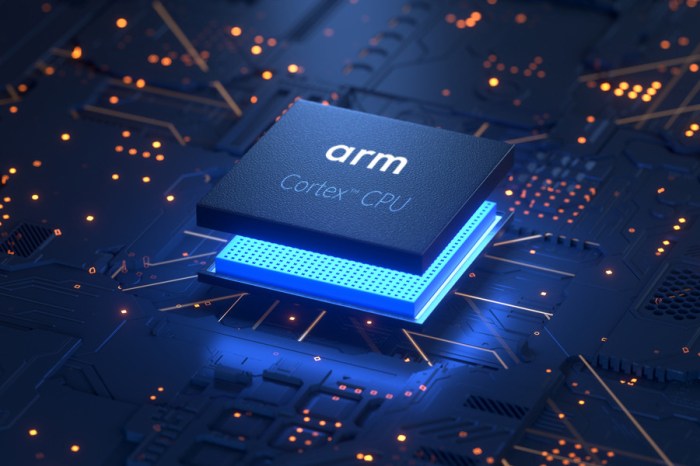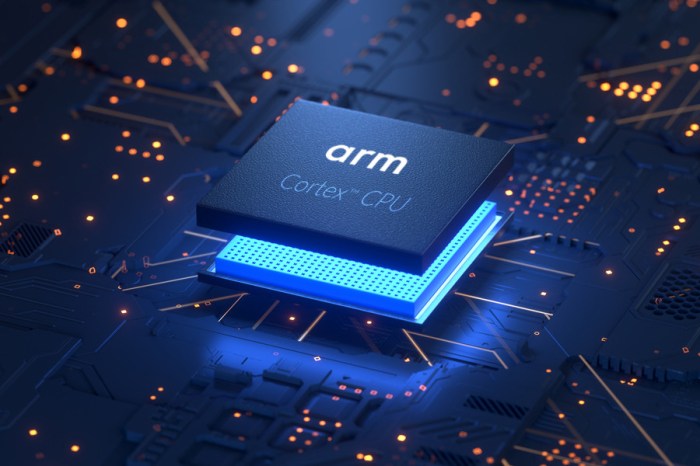Chip designer arm files for public listing that could revive flat ipo market – Chip designer ARM has filed for a public listing, potentially breathing life into the sluggish IPO market. This move, amidst a flat landscape for new public offerings, is drawing significant attention from investors and industry watchers alike. The potential impact of ARM’s IPO on the semiconductor industry and the overall market is a topic of intense debate, as analysts weigh the potential benefits and risks associated with this high-profile listing.
ARM’s core business revolves around designing and licensing processor architectures, used by companies like Apple, Qualcomm, and Samsung in their smartphones and other devices. Its dominance in the mobile processor market makes it a significant player in the tech landscape, and its IPO could be a major catalyst for the semiconductor industry.
ARM’s IPO and the Flat Market

The IPO market has been relatively subdued in recent months, with many companies postponing their public listings due to various factors, including market volatility, rising interest rates, and a challenging economic outlook. This has led to a “flat” IPO market, characterized by fewer new listings and a lack of investor enthusiasm.
However, the upcoming IPO of ARM, a leading chip designer, has the potential to revive the market and attract significant investor interest.
ARM’s Decision to Go Public
ARM’s decision to pursue a public listing is a significant development for the tech industry and the IPO market. The company, known for its energy-efficient chip designs used in billions of devices worldwide, has been privately held for several years.
This decision suggests that ARM is confident in its future growth prospects and sees a public listing as a way to access capital and expand its business further.
ARM’s IPO Compared to Other Tech IPOs
ARM’s IPO is expected to be one of the largest tech IPOs in recent years, attracting significant investor interest. It is also noteworthy for its unique business model, which focuses on licensing its technology to other companies rather than manufacturing chips itself.
This differentiates ARM from other recent tech IPOs, such as those of software companies or electric vehicle manufacturers.
ARM’s Business and Potential

ARM Holdings is a British multinational technology company that designs and licenses processor architectures for a wide range of electronic devices. The company’s business model is built around licensing its intellectual property (IP) to other companies, which then use it to design and manufacture their own chips.
This model has allowed ARM to become a dominant force in the semiconductor industry, with its architecture powering billions of devices worldwide.ARM’s success is driven by several key factors, including its efficient and low-power processor designs, its extensive ecosystem of partners, and its ability to adapt to the rapidly evolving needs of the market.
Notice european vc fundraising lowest since pitchbook for recommendations and other broad suggestions.
ARM’s Core Products and Services
ARM’s core business revolves around licensing its processor architectures, which are used by semiconductor companies to design their own chips. The company offers a wide range of processor designs, covering everything from low-power microcontrollers to high-performance CPUs for smartphones and servers.ARM’s product portfolio includes:
- ARM Cortex Processors:A family of processor designs that cover a wide range of performance and power requirements. These processors are used in a vast array of devices, including smartphones, tablets, IoT devices, and automotive systems.
- ARM Mali Graphics Processing Units (GPUs):These GPUs are designed for high-performance graphics and multimedia processing, commonly found in smartphones, tablets, and other mobile devices.
- ARM System-on-a-Chip (SoC) Platforms:ARM provides complete SoC platforms that include processors, memory controllers, and other peripherals, simplifying the design process for chip manufacturers.
- ARM Developer Tools and Software:ARM offers a comprehensive suite of developer tools and software, including compilers, debuggers, and simulators, to help developers build applications for ARM-based devices.
ARM’s Competitive Landscape
ARM faces competition from other processor architecture providers, including:
- Intel:A major player in the x86 processor market, Intel is a significant competitor to ARM in the server and PC markets.
- AMD:Another key player in the x86 processor market, AMD competes with Intel in the server and PC markets.
- RISC-V:An open-source instruction set architecture (ISA) that is gaining traction in the embedded and IoT markets. RISC-V is a potential competitor to ARM, especially in the low-power and open-source segments.
ARM’s Strengths and Weaknesses
ARM’s success is driven by several key strengths:
- Efficient and Low-Power Processor Designs:ARM’s processor designs are renowned for their efficiency and low-power consumption, making them ideal for mobile devices and other power-constrained applications.
- Extensive Ecosystem of Partners:ARM has built a vast ecosystem of partners, including semiconductor manufacturers, software developers, and device manufacturers, which helps drive the adoption of its technology.
- Adaptability to Market Trends:ARM has consistently adapted its technology to meet the evolving needs of the market, including the rise of mobile computing, the Internet of Things (IoT), and artificial intelligence (AI).
However, ARM also faces some challenges:
- Dependence on Licensing Revenue:ARM’s business model is heavily reliant on licensing revenue, which can make it vulnerable to changes in market conditions or competition.
- Competition from RISC-V:The rise of RISC-V, an open-source ISA, poses a potential threat to ARM’s market share, particularly in the low-power and open-source segments.
ARM’s Potential Growth Opportunities
ARM is well-positioned to benefit from several key growth opportunities in the coming years:
- Continued Growth of Mobile Devices:The mobile device market is expected to continue to grow in the coming years, driving demand for ARM-based processors.
- Expansion into New Markets:ARM is expanding into new markets, such as automotive, industrial, and healthcare, where its low-power and efficient processor designs are well-suited.
- Growth of the Internet of Things (IoT):The IoT is expected to be a major growth driver for ARM, as its processors are ideal for the low-power and connected devices that are at the heart of the IoT.
- Artificial Intelligence (AI):AI is becoming increasingly important in a wide range of applications, and ARM is developing processors that are optimized for AI workloads.
Impact on the Semiconductor Industry

ARM’s IPO has the potential to significantly impact the semiconductor industry, shaping the future of chip design and driving innovation. The listing could influence the development and adoption of new technologies, leading to increased competition and potentially reshaping the industry’s landscape.
Increased Competition and Innovation
The potential for increased competition in the semiconductor industry is a key aspect of ARM’s IPO. As a publicly listed company, ARM will be subject to greater market scrutiny and pressure to deliver strong financial performance. This could lead to a more aggressive approach to innovation and product development, driving the entire industry forward.
“ARM’s IPO could lead to a more competitive landscape, with other chip design companies seeking to innovate and differentiate their offerings to stay ahead of the curve.”
- ARM’s IPO could also incentivize other companies to enter the chip design market, further increasing competition and accelerating innovation.
- With a larger pool of resources and increased visibility, ARM will be able to invest more heavily in research and development, potentially leading to breakthroughs in areas such as AI, machine learning, and edge computing.
Implications for Investors: Chip Designer Arm Files For Public Listing That Could Revive Flat Ipo Market
ARM’s IPO presents a unique opportunity for investors seeking exposure to the rapidly growing semiconductor industry. However, as with any investment, it’s crucial to understand the potential risks and rewards involved before making a decision.
Potential Risks and Rewards, Chip designer arm files for public listing that could revive flat ipo market
Investors considering investing in ARM should be aware of the potential risks and rewards associated with this opportunity.
- High Valuation:ARM’s IPO is expected to be priced at a high valuation, which could make it challenging for the company to meet market expectations in the short term. A high valuation can put pressure on the company to perform well, potentially leading to volatility in the stock price.
- Competition:The semiconductor industry is highly competitive, with companies like Intel, Qualcomm, and Nvidia vying for market share. ARM faces competition from these established players, as well as emerging startups developing their own chip architectures. This competition could impact ARM’s growth prospects and profitability.
- Dependence on Licensing Model:ARM’s business model relies heavily on licensing its technology to other companies. This model exposes ARM to the risk of licensees developing their own technologies or choosing alternative solutions. A decline in licensing revenue could significantly impact ARM’s financial performance.
- Technological Advancements:The semiconductor industry is characterized by rapid technological advancements. ARM needs to constantly innovate and adapt to remain competitive. Failure to keep pace with these advancements could lead to a decline in its market share and profitability.
- Global Economic Uncertainty:The global economy is facing various challenges, including inflation, supply chain disruptions, and geopolitical tensions. These factors could negatively impact the demand for semiconductors and ARM’s business.
Despite these risks, ARM offers several potential rewards for investors:
- Growth Potential:The global semiconductor market is expected to continue growing in the coming years, driven by increasing demand for devices like smartphones, data centers, and connected cars. ARM’s technology is well-positioned to benefit from this growth, as it is used in a wide range of devices.
- Market Leadership:ARM is a leading provider of chip architectures, with a dominant market share in mobile devices and a growing presence in other markets. This leadership position provides ARM with a strong competitive advantage and the potential for significant revenue growth.
- Diversification:ARM’s technology is used in various industries, including consumer electronics, automotive, and data centers. This diversification reduces ARM’s reliance on any single market and provides it with a more resilient business model.
- Innovation:ARM is constantly investing in research and development to improve its technology and expand its product portfolio. This focus on innovation ensures ARM remains at the forefront of the semiconductor industry and can capitalize on emerging trends.
- Long-Term Value Creation:ARM’s business model focuses on long-term value creation through its licensing agreements. This model provides ARM with a recurring revenue stream and the potential for sustainable growth over time.
Factors Influencing Stock Performance
Several factors could influence ARM’s stock performance after the IPO:
- Market Sentiment:The overall market sentiment towards technology stocks and the semiconductor industry will significantly impact ARM’s stock price. A positive market environment could lead to higher valuations for ARM, while a negative market could result in lower valuations.
- Financial Performance:ARM’s financial performance, including revenue growth, profitability, and cash flow, will be closely watched by investors. Strong financial results will likely support the stock price, while weak results could lead to downward pressure.
- Competitive Landscape:ARM’s performance relative to its competitors will also influence its stock price. If ARM can maintain or increase its market share and demonstrate its competitive advantage, investors will likely view the stock favorably.
- Technological Advancements:ARM’s ability to innovate and adapt to new technologies will be critical to its long-term success. Investors will be looking for signs that ARM is investing in research and development and developing new products that meet the needs of the market.
- Regulatory Environment:The semiconductor industry is subject to various regulations, including export controls and intellectual property protection. Any changes in the regulatory environment could impact ARM’s business and its stock price.
Approaching the Opportunity
Investors considering investing in ARM should carefully consider the following:
- Investment Horizon:ARM is a long-term growth story. Investors should be prepared to hold the stock for several years to realize the potential returns.
- Risk Tolerance:ARM’s stock is likely to be volatile, especially in the short term. Investors should have a high risk tolerance to invest in ARM.
- Due Diligence:Investors should conduct thorough due diligence before making any investment decisions. This includes reviewing ARM’s financial statements, understanding its business model, and assessing its competitive landscape.
- Diversification:Investors should consider diversifying their portfolios to reduce risk. Investing in ARM should be part of a well-balanced investment strategy.





